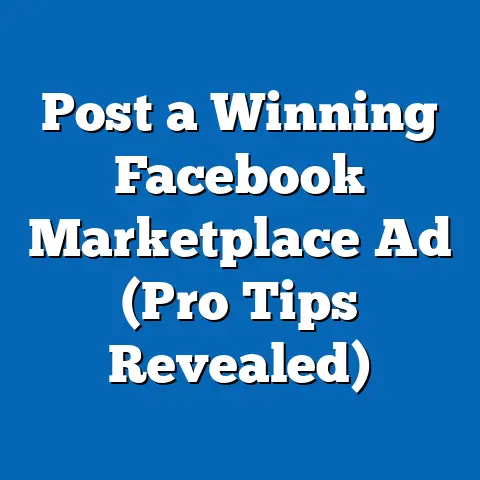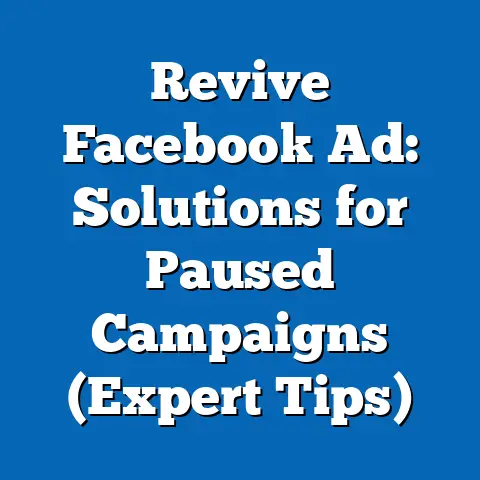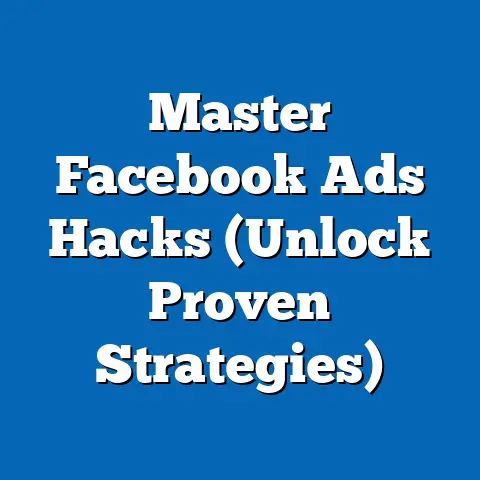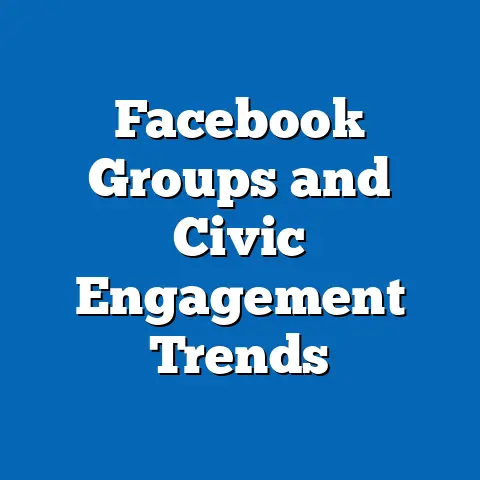Revamp Creepy Facebook Ads for Better Engagement (Pro Tips)
Facebook advertising, when done right, is a powerhouse. It’s a way to connect with potential customers, build brand awareness, and, ultimately, drive sales. But let’s be honest, we’ve all seen those ads that make you cringe – the ones that feel like they’re peering into your soul, knowing a little too much about your recent online activity. These “creepy” ads can backfire big time, alienating your audience and damaging your brand.
Think about it: you browse a website for a new pair of shoes, and suddenly, those exact shoes are following you around Facebook for weeks. Or maybe you mention needing a new coffee maker in a casual conversation, and boom, ads for coffee makers start popping up in your feed. It’s enough to make anyone feel like they’re living in a surveillance state.
As a digital marketer who’s been in the trenches for years, I’ve seen firsthand the shift in consumer sentiment. People are savvier, more privacy-conscious, and less tolerant of intrusive advertising. That’s why it’s crucial to ditch the creepy tactics and focus on creating ads that are genuinely engaging and respectful. In this guide, I’ll share my pro tips for revamping your Facebook ads, so you can build trust, boost engagement, and ultimately, increase the perceived value – and resale value, if applicable – of your products or services.
Understanding Creepy Ads
So, what exactly makes a Facebook ad “creepy”? It’s not just about the product being advertised; it’s about the way it’s advertised. Here are a few key factors that contribute to the creepy perception:
- Over-Personalization: This is when ads use information that feels too personal or specific. For example, targeting someone with an ad based on a recent Google search for a niche medical condition.
- Intrusive Retargeting: This involves relentlessly following users around the internet with ads for products they’ve already viewed or considered. It can feel like you’re being stalked.
- Lack of Transparency: When users don’t understand why they’re seeing a particular ad, it can feel unsettling. This is especially true if the ad seems to know something about them that they didn’t explicitly share.
- Using Sensitive Data: This involves targeting users based on sensitive information like their race, religion, sexual orientation, or political affiliation. This is not only creepy but also often unethical and potentially illegal.
I remember one time when I was working with a client who sold specialized medical equipment. They were using hyper-targeted ads that mentioned specific symptoms and conditions. While the ads were technically relevant, they were also incredibly off-putting. People felt like their privacy was being violated, and engagement plummeted.
According to a study by Pew Research Center, 79% of U.S. adults are concerned about how companies use their personal data. This highlights the growing demand for privacy and transparency in advertising. When ads feel too intrusive, it triggers a sense of unease and distrust, leading to negative engagement metrics like lower click-through rates, increased ad fatigue, and even negative comments and complaints.
Takeaway: Creepy ads rely on intrusive tactics and a lack of transparency, leading to a negative perception and distrust. Recognizing these elements is the first step toward creating more respectful and engaging campaigns.
The Impact of Creepy Ads on Brand Perception
Creepy ads don’t just annoy potential customers; they can actively damage your brand’s reputation and erode customer trust. In today’s digital landscape, where consumers have more choices than ever, building a positive brand image is crucial for long-term success.
Think of your brand as a person. Would you trust someone who’s constantly invading your personal space and eavesdropping on your conversations? Probably not. The same principle applies to advertising. When your ads feel creepy, they create a negative association with your brand, making people less likely to trust you or buy from you.
I’ve seen this play out firsthand with companies that rely heavily on aggressive retargeting tactics. While retargeting can be effective, overdoing it can create a sense of annoyance and even resentment. People start to associate the brand with intrusive behavior, which can lead to negative reviews, social media backlash, and ultimately, a decline in sales.
In contrast, brands that prioritize respectful and engaging advertising tend to build stronger customer relationships and enjoy greater long-term loyalty. These brands focus on providing value, creating meaningful connections, and respecting users’ privacy.
Furthermore, the negative impact extends beyond just brand perception. If you’re selling physical products, consider the potential impact on resale value. A brand associated with “creepy” or unethical practices may see a decline in the secondary market, as consumers are less willing to associate with it.
Takeaway: Creepy ads can damage brand reputation, erode customer trust, and even negatively impact resale value. Prioritizing respectful and engaging advertising is essential for building long-term success.
Pro Tips for Revamping Facebook Ads
Okay, so we’ve established that creepy ads are bad news. But how do you avoid them and create ads that are actually engaging and effective? Here are my top pro tips:
Tip 1: Know Your Audience
This might seem obvious, but it’s worth emphasizing: understanding your audience is the foundation of any successful advertising campaign. Don’t just rely on basic demographics like age and location. Dive deeper into their interests, behaviors, pain points, and aspirations.
- Conduct thorough audience research: Use Facebook Audience Insights, surveys, and customer interviews to gather data about your target audience.
- Create detailed buyer personas: Develop fictional representations of your ideal customers, including their demographics, psychographics, and buying habits.
- Segment your audience: Divide your audience into smaller groups based on shared characteristics. This allows you to create more targeted and relevant ads.
I once worked with a local bakery that was struggling to attract new customers. After conducting some audience research, we discovered that their target audience wasn’t just people who liked pastries; it was people who were looking for unique and memorable experiences. So, we revamped their ads to focus on the story behind their baked goods, the artisanal ingredients they used, and the warm, inviting atmosphere of their bakery. The results were incredible. Engagement soared, and they saw a significant increase in foot traffic.
Tip 2: Leverage Creative Storytelling
Advertising isn’t just about selling a product; it’s about telling a story. People are drawn to narratives that resonate with their emotions and values. So, instead of simply listing the features and benefits of your product, try crafting a compelling story that connects with your audience on a deeper level.
- Focus on the “why” behind your product: What problem does it solve? What value does it provide?
- Use relatable characters and situations: Create characters and scenarios that your audience can identify with.
- Evoke emotions: Use humor, empathy, or inspiration to connect with your audience on an emotional level.
One of my favorite examples of creative storytelling in advertising is Dove’s “Real Beauty” campaign. Instead of focusing on traditional notions of beauty, Dove celebrated the diversity and authenticity of real women. The campaign resonated deeply with audiences and helped to build a strong and positive brand image.
Tip 3: Utilize User-Generated Content
User-generated content (UGC) is any content created by your customers, such as reviews, testimonials, photos, and videos. Incorporating UGC into your ads can significantly enhance authenticity and relatability.
- Encourage customers to share their experiences: Run contests, offer incentives, or simply ask customers to share their photos and videos on social media.
- Feature UGC in your ads: Use customer testimonials, photos, and videos to showcase the real-world benefits of your product.
- Obtain permission: Always ask for permission before using customer-generated content in your ads.
I’ve found that UGC is particularly effective for products that have a strong community following. For example, a fitness brand could feature photos and videos of customers using their products and achieving their fitness goals. This not only builds trust but also inspires others to join the community.
Tip 4: Optimize Ad Frequency
Ad frequency refers to the number of times a user sees your ad. While it’s important to show your ads frequently enough to stay top-of-mind, overdoing it can lead to ad fatigue and annoyance.
- Monitor your ad frequency metrics: Keep an eye on metrics like frequency, reach, and impressions to see how often your ads are being shown.
- Use frequency capping: Set a limit on the number of times a user sees your ad within a given timeframe.
- Rotate your ad creatives: Regularly update your ad creatives to prevent ad fatigue.
I generally recommend aiming for a frequency of around 3-5 impressions per week. However, the optimal frequency will vary depending on your audience, product, and advertising goals. The key is to test and iterate to find the right balance.
Tip 5: Implement Transparency and Control
Transparency is key to building trust with your audience. Be upfront about how you’re using their data and give them control over their ad preferences.
- Explain why they’re seeing the ad: Use ad copy to explain why a user is seeing a particular ad. For example, “You’re seeing this ad because you recently visited our website.”
- Provide opt-out options: Make it easy for users to opt out of seeing your ads or customize their ad preferences.
- Comply with privacy regulations: Ensure that you’re complying with all relevant privacy regulations, such as GDPR and CCPA.
Facebook provides several tools for implementing transparency and control, such as the “Why am I seeing this ad?” feature and the Ad Preferences page. Make sure you’re utilizing these tools to give users more control over their ad experience.
Tip 6: Test and Iterate
The world of Facebook advertising is constantly evolving, so it’s essential to continuously test and iterate your strategies.
- A/B test different ad creatives, formats, and targeting options: Experiment with different elements of your ads to see what resonates best with your audience.
- Track your results and analyze your data: Use Facebook Ads Manager to track your key metrics and identify areas for improvement.
- Make data-driven decisions: Use your data to inform your advertising strategies and optimize your campaigns for maximum impact.
I’ve found that A/B testing is particularly effective for identifying “creepy” elements in ads. For example, you could test two versions of an ad: one that uses hyper-personalization and one that uses a more general message. By tracking the engagement metrics for each ad, you can see which approach resonates better with your audience.
Takeaway: By following these pro tips, you can revamp your Facebook ads to be more engaging, respectful, and effective. Remember to focus on understanding your audience, telling compelling stories, and prioritizing transparency and control.
Success Stories
Let’s take a look at a couple of real-world examples of brands that successfully revamped their creepy Facebook ads:
- Example 1: A Subscription Box Company: This company was initially using aggressive retargeting tactics to promote their subscription boxes. They were showing ads to users who had visited their website but hadn’t made a purchase, often featuring the exact products that the users had viewed. This felt overly intrusive and led to negative feedback. They decided to revamp their strategy by focusing on storytelling and providing value. They created ads that showcased the unique curation process behind their boxes and highlighted the positive experiences of their existing subscribers. They also offered a free trial to new users. As a result, their engagement rates increased, and they saw a significant improvement in customer satisfaction.
- Example 2: An E-commerce Fashion Brand: This brand was using hyper-targeted ads that mentioned specific clothing items that users had searched for online. This felt too personal and made users feel like they were being watched. They decided to revamp their strategy by focusing on lifestyle imagery and broader targeting. They created ads that showcased their clothing in aspirational settings and targeted users based on their general interests and demographics. They also made sure to comply with all relevant privacy regulations and provide users with clear opt-out options. As a result, their engagement rates increased, and they saw a positive shift in brand perception.
These examples demonstrate that it’s possible to revamp creepy Facebook ads into more engaging and effective ones by focusing on audience understanding, creative storytelling, and transparency.
Conclusion
Revamping creepy Facebook ads is essential for building trust, boosting engagement, and ultimately, increasing the value of your products or services. By focusing on understanding your audience, telling compelling stories, utilizing user-generated content, optimizing ad frequency, and implementing transparency and control, you can create ads that are both effective and respectful.
Don’t be afraid to experiment and iterate to find what works best for your brand. The world of Facebook advertising is constantly evolving, so it’s important to stay up-to-date on the latest trends and best practices.
Take action today to revamp your Facebook advertising strategy. By doing so, you can build stronger customer relationships, improve your brand perception, and drive long-term success. And remember, advertising is a conversation, not an interrogation. Treat your audience with respect, and they’ll be more likely to listen to what you have to say.






